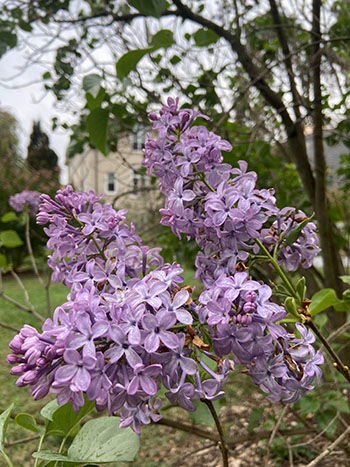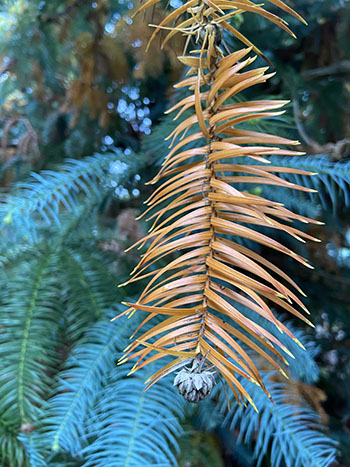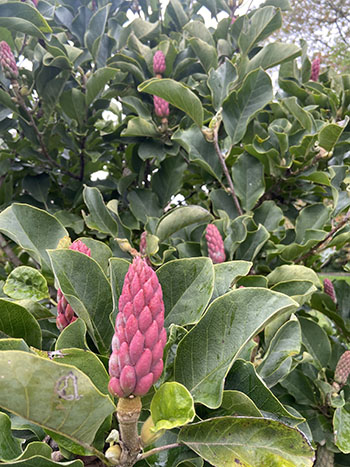
Plant of the Week: October 17

Syringa vulgaris ‘President Lincoln’ (common lilac)
Early fall, the leaves are changing, the colchicum are blooming, and the Lilac Collection is scented with the heavenly smell of those lovely purple flowers. Wait, no, can that be right? But yes! A stroll through the Lilac Collection will reveal a variety of our specimens in bloom including the Syringa vulgaris ‘President Lincoln’.
But how can this be? Stressful environmental conditions during the growing season such as heat, drought, severe defoliation from disease or pest, and/or heavy pruning can prompt some spring-blooming plants to flower. Lilacs “set” their flower buds for the following year in early summer shortly after the previous spring blooms fade. The stressful conditions we experienced this past summer – heat and drought – caused the plants to go dormant and when the cooler fall weather arrived it tricked them into a false sense of spring, causing the blooms. This untimely bloom will not harm the plant, but since they have used up their spring flower reserves now, there will be fewer flowers on the plants next spring.
This out-of-season occurrence in some ways is a lovely surprise and in others is a testament to our changing climate and its effects on our much loved plants. Once fall blooms are observed, there is nothing that can be done to fix the issue, however preventative measures can be taken. Good care during stressful conditions, such as extra watering, reducing pruning, and even relocating smaller specimens to more shaded areas can help keep the blooming cycle regular.
In the meantime, the blooms are here and should be enjoyed. Syringa vulgaris ‘President Lincoln’ is known to be one of the bluest lilacs with its panicles adorning the ends of its relatively loose branches. It can grow to be 8-10 feet tall and wide and is located at the top of the Lilac Collection, nearest to the Friends Meetinghouse. Photo credit: M. Rossman

Cunninghamia lanceolata blue form (Chinafir)
On the edge of the tennis courts in the Pinetum is a lovely needled evergreen also giving clues to the harshness of this past summer. Cunninghamia lanceolata blue form is a beautiful specimen in the cyprus (Cupressaceae) family. It can grow up to 30-70 feet tall in cultivation, but is known to grow up to 150 feet in its native forests of China and Taiwan. A highly valued tree, it accounts for 20-30% of the total commercial timber production in China, while also being used in the medicine and perfume industries.
It has sharply-pointed, finely-toothed, green to blue-green needles that are spirally arranged on its branches. However, when looking at the Scott Arboretum specimen one will notice that many of its branches and needles are bronze. It is normal for the Chinafir to lose some of its foliage as winter approaches, and has a tendency to hold onto many of its dead needles. And while the contrast of the bronze against blue is striking, it is yet another reminder that all living things felt the harshness of the past summer. Photo credit: M. Rossman

Magnolia ‘March Til Frost’ (Kehr hybrid magnolia)
Pink may be creeping into my list of favorite flower colors, and one specimen that produces a lovely pink is the Magnolia ‘March Til Frost’, located near Old Tarble. This shorter specimen is true to its name and starts blooming with a massive flowering in March or April and will continue to produce sporadic dark- to pale-pink flowers all summer and early autumn until the first frost. And while it does still have a couple of blossoms waiting to open, what really caught my attention was its lovely cones, which are an attractive magenta. These upright seed cones are beautifully contrasted with its dark green foliage. Since this specimen is on the shorter side, the cones and flowers are at perfect eye-level and can be appreciated up close. My fingers are crossed wishing for the delay of winter just so I can continue to admire this magnolia till frost. Photo credit: M. Rossman





No Comments